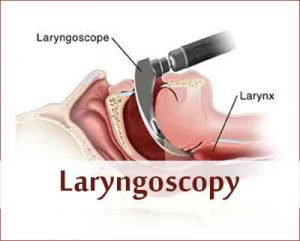- Home
- Editorial
- News
- Practice Guidelines
- Anesthesiology Guidelines
- Cancer Guidelines
- Cardiac Sciences Guidelines
- Critical Care Guidelines
- Dentistry Guidelines
- Dermatology Guidelines
- Diabetes and Endo Guidelines
- Diagnostics Guidelines
- ENT Guidelines
- Featured Practice Guidelines
- Gastroenterology Guidelines
- Geriatrics Guidelines
- Medicine Guidelines
- Nephrology Guidelines
- Neurosciences Guidelines
- Obs and Gynae Guidelines
- Ophthalmology Guidelines
- Orthopaedics Guidelines
- Paediatrics Guidelines
- Psychiatry Guidelines
- Pulmonology Guidelines
- Radiology Guidelines
- Surgery Guidelines
- Urology Guidelines
Indian Journal of Anaesthesia Study focuses on airway measurements of South Indian population

Most studies on upper airway are conducted based on airway measurements in the western population. However, very few are done in the Indian Context
A recent study was performed by doctors from Department of Anesthesia, Cancer Institute (WIA), Chennai, Tamil Nadu, India to find the normal values of upper airway measurements in South Indian population with the aim to perform various upper airway examinations and to set standards for normal measurements in the South Indian population as well as to analyse the data for predictors of difficult intubation.
This prospective observational study was conducted in a tertiary cancer hospital in Southern India. Airway assessment parameters, including modified Mallampati classification (MPC), upper lip bite test (ULBT), sternomental distance, thyromental distance (TMD), and the inter-incisor distance were documented for 2004 patients meeting the inclusion criteria. Laryngoscopic view after induction was graded as per Cormack and Lehane's (CL) classification. Any CL ≥3 was considered to be difficult laryngoscopy. The collected data (2004 cases) was analyed with SPSS software version 17. Receiver operating characteristics (ROC) curve was used to determine cut-offs in the population. Sensitivity, specificity, positive and negative predictive value were computed.
Doctors Kalpana P Balakrishnan, Punitha A Chockalingam, from Cancer Institute (WIA), who performed the study, found that MPC, ULBT, and ratio of height to TMD (RHTMD) predicted difficult intubation with sensitivity of 40.86%, 45.53% and 64.60%, respectively and these were statistically significant. Using the area under the curve of the ROC curve and discrimination analysis normal RHTMD in our population had a cut off value of 17.1.
The authors concluded that the cut off value for RHTMD to predict difficult laryngoscopy in the South Indian population is 17.1.
The Study has been published in the August 2017 Issue of the Indian Journal of Anaesthesia, the official scientific journal of Indian Society of Anaesthesiologists.
You can read the article by clicking on the following link
Balakrishnan KP, Chockalingam PA. Ethnicity and upper airway measurements: A study in South Indian population. Indian J Anaesth [serial online] 2017 [cited 2017 Sep 6];61:622-8. Available from: http://www.ijaweb.org/text.asp?2017/61/8/622/212871

Disclaimer: This site is primarily intended for healthcare professionals. Any content/information on this website does not replace the advice of medical and/or health professionals and should not be construed as medical/diagnostic advice/endorsement or prescription. Use of this site is subject to our terms of use, privacy policy, advertisement policy. © 2020 Minerva Medical Treatment Pvt Ltd